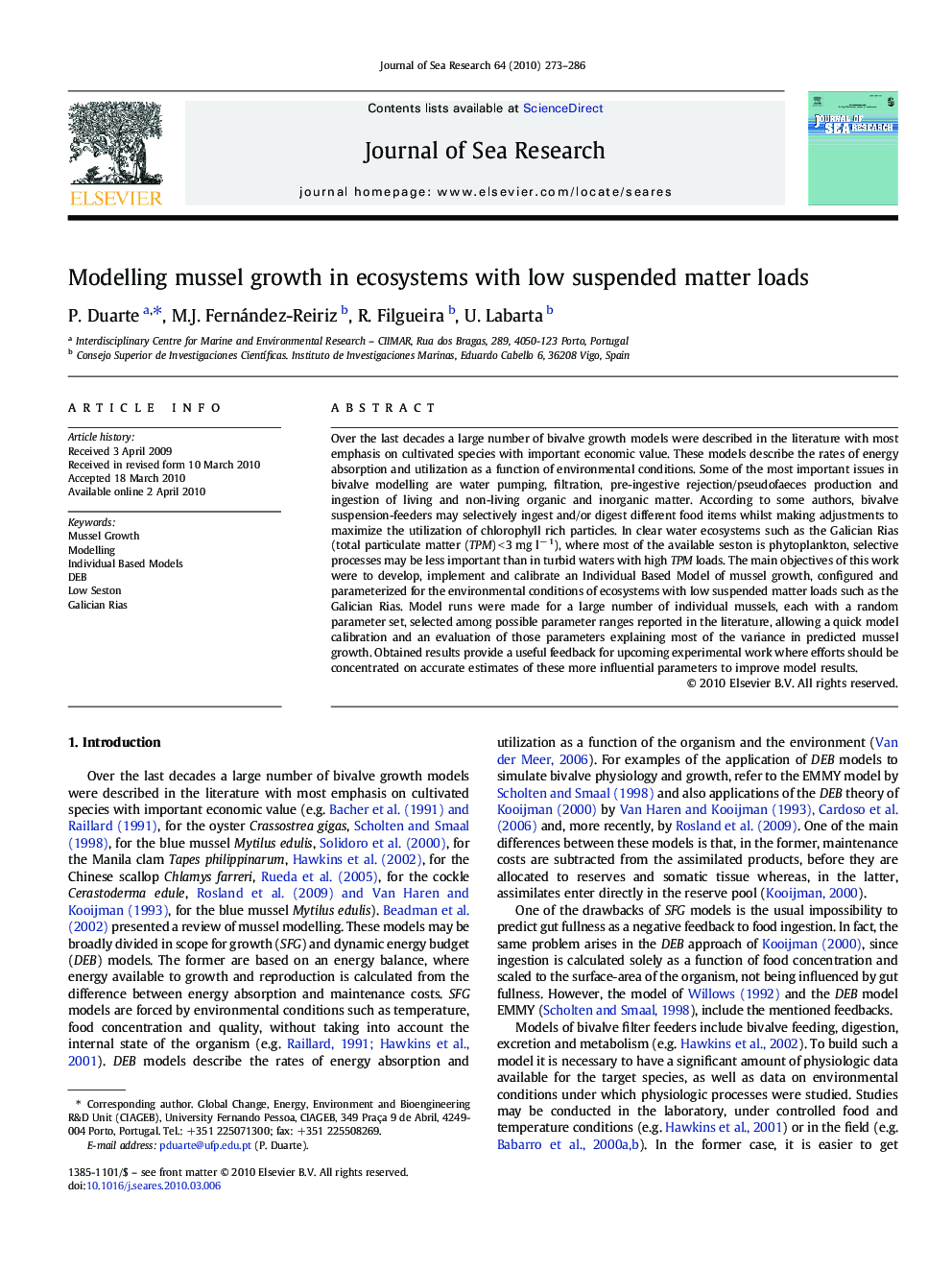| Article ID | Journal | Published Year | Pages | File Type |
|---|---|---|---|---|
| 4550176 | Journal of Sea Research | 2010 | 14 Pages |
Abstract
Over the last decades a large number of bivalve growth models were described in the literature with most emphasis on cultivated species with important economic value. These models describe the rates of energy absorption and utilization as a function of environmental conditions. Some of the most important issues in bivalve modelling are water pumping, filtration, pre-ingestive rejection/pseudofaeces production and ingestion of living and non-living organic and inorganic matter. According to some authors, bivalve suspension-feeders may selectively ingest and/or digest different food items whilst making adjustments to maximize the utilization of chlorophyll rich particles. In clear water ecosystems such as the Galician Rias (total particulate matter (TPM) < 3 mg lâ 1), where most of the available seston is phytoplankton, selective processes may be less important than in turbid waters with high TPM loads. The main objectives of this work were to develop, implement and calibrate an Individual Based Model of mussel growth, configured and parameterized for the environmental conditions of ecosystems with low suspended matter loads such as the Galician Rias. Model runs were made for a large number of individual mussels, each with a random parameter set, selected among possible parameter ranges reported in the literature, allowing a quick model calibration and an evaluation of those parameters explaining most of the variance in predicted mussel growth. Obtained results provide a useful feedback for upcoming experimental work where efforts should be concentrated on accurate estimates of these more influential parameters to improve model results.
Related Topics
Physical Sciences and Engineering
Earth and Planetary Sciences
Oceanography
Authors
P. Duarte, M.J. Fernández-Reiriz, R. Filgueira, U. Labarta,
